Tobi Trousers: The Timeless Workwear Where Tradition Meets Fashion
🧷 Introduction: Why Tobi Trousers Are Gaining Global Attention
In recent years, the term “Tobi Trousers” has been making waves in the global fashion scene. On social media, you’ll find young trendsetters pairing them with streetwear, while high-end designer brands have featured these distinctive pants on their runways. At first glance, their exaggerated silhouette might seem like just another avant-garde trend. But how many people truly know the rich cultural heritage and proud history woven into these pants?
Originally designed for Japanese construction workers known as tobi—masters of high-altitude scaffolding—these work trousers were born out of necessity. With wide, ballooned thighs tapering sharply at the ankles, their unique shape was engineered for maximum mobility and safety on dangerous job sites. Beyond functionality, Tobi Trousers became a symbol of identity and pride for these “men who work as if they’re flying through the air.”
In this article, we’ll dive deep into what makes Tobi Trousers so special. From their origins and evolution to their place in modern fashion, and even how to style and where to buy them, we’ll explore why this unique Japanese workwear is now capturing the attention of the world.
🧷 What Are Tobi Trousers? A Closer Look
🔥 Born for Japan’s High-Rise Artisans
Tobi Trousers stand out as one of Japan’s most iconic pieces of workwear. Originally designed for tobi—Japanese construction workers specializing in high-altitude scaffolding—the trousers embody functionality, safety, and an undeniable sense of pride.
The term “tobi” translates literally as “flying bird,” reflecting how these workers seem to soar through the air while assembling intricate scaffolds. In such dangerous environments, they required clothing that offered unrestricted movement, protection from the elements, and a visual representation of their craft and identity. Over time, Tobi Trousers evolved to meet these needs, becoming a symbol of their profession.
👀 Why the Unique Silhouette?
At first glance, Tobi Trousers are unmistakable thanks to their bold, architectural shape:
- Wide, ballooned thighs
- Tapered, tightly cinched ankles
This design is far from aesthetic alone—it’s deeply functional. The loose upper portion allows for full range of motion, vital for climbing and crouching on scaffolding. Meanwhile, the narrowed ankles minimize wind resistance and prevent the hem from catching on structures—a critical safety feature when working hundreds of feet in the air.
The snug fit at the ankles also enhances balance and reduces tripping hazards, making this silhouette not only practical but potentially life-saving.
👣 Completed with Jikatabi
Tobi Trousers are traditionally paired with jikatabi—split-toe, rubber-soled footwear that allows workers to “feel” the scaffolding beneath their feet. This pairing creates a distinctive silhouette that blends utility and visual impact.
More than just clothing, the Tobi Trousers and jikatabi combo became a uniform of solidarity, reflecting the pride and camaraderie of the tobi brotherhood.
🌍 A Contemporary Fashion Icon
In recent years, the dramatic shape of Tobi Trousers has caught the eye of global fashion enthusiasts. In streetwear and techwear circles, they are praised as a perfect fusion of “futuristic minimalism” and functional design.
High-end designers have reinterpreted the silhouette on runways, and stylists pair Tobi Trousers with everything from oversized hoodies to traditional kimono jackets.
But it’s important to remember: these are not simply trend pieces. Tobi Trousers carry generations of craftsmanship, innovation, and the indomitable spirit of those “men who work as if flying.” Wearing them with an understanding of their history gives the trousers a meaning that transcends fashion—they become a wearable story of Japanese work culture.
🧷 The History of Tobi Trousers: From Tradition to Modern Style
🏯 Postwar Japan: The Birth of Functional Workwear
Tobi Trousers, or tobi-zubon, rapidly evolved in postwar Japan. During the country’s period of rapid economic growth, cities were filled with towering construction projects. Demand surged for tobi—the fearless high-rise construction workers who assembled scaffolding with bird-like agility.
To meet the challenges of working hundreds of feet in the air, they needed more than just standard workwear. They required clothing that allowed for unhindered movement, resisted wind, and protected them in precarious conditions. The result was the prototype of today’s Tobi Trousers, with their roomy thighs and tightly tapered ankles—a design that served as a “battle uniform” for these urban warriors.
👘 Inspired by Hakama and Karusan
The origins of Tobi Trousers can be traced back even further, to Japan’s traditional clothing. Two garments in particular influenced their design: the hakama, worn by samurai, and the karusan, a practical work pant popular among commoners during the Edo period.
Hakama featured wide legs that allowed free movement—perfect for sword fighting or horseback riding. Karusan pants, tied just below the knees, provided a lightweight fit ideal for physical labor. Tobi artisans blended these traditional elements into a design optimized for their modern-day scaffolding work.
This lineage makes it clear that Tobi Trousers are far more than just work pants; they represent centuries of Japanese craftsmanship and cultural evolution.
🦅 Tobi: “Men Who Fly”
The very word tobi carries special significance. It evokes images of workers moving with bird-like precision across high scaffolding, shaping Japan’s urban skyline. Their skills and bravery earned them admiration and a sense of mythos—they became known as “men who fly.”
For these artisans, Tobi Trousers were not just practical attire; they became a symbol of pride, identity, and solidarity. Wearing them signaled readiness to face danger and a deep connection to their craft and community.
🏭 Brands That Preserve Tradition
Even today, the tradition of Tobi Trousers lives on through iconic Japanese brands. Makers like Toraichi and Kantou Tobi have kept the heritage alive by refining their designs with input from generations of craftsmen. Their products balance durability, functionality, and aesthetics in a way that appeals not only to workers but also to fashion enthusiasts.
As a result, Tobi Trousers are no longer confined to construction sites. They’ve entered the global stage, embraced by style-conscious individuals who value their history, craftsmanship, and unmistakable silhouette.
🎌 From Japanese Subcultures to Global Streetwear
Tobi Trousers (tobi-zubon) have long been more than just functional workwear. In Japan, they became a powerful symbol within subcultures. From the 1970s through the 1990s, rebellious youth movements like the bosozoku (motorcycle gangs) and gyaru-o (male counterparts of the gyaru fashion movement) embraced Tobi Trousers as part of their bold style statements.
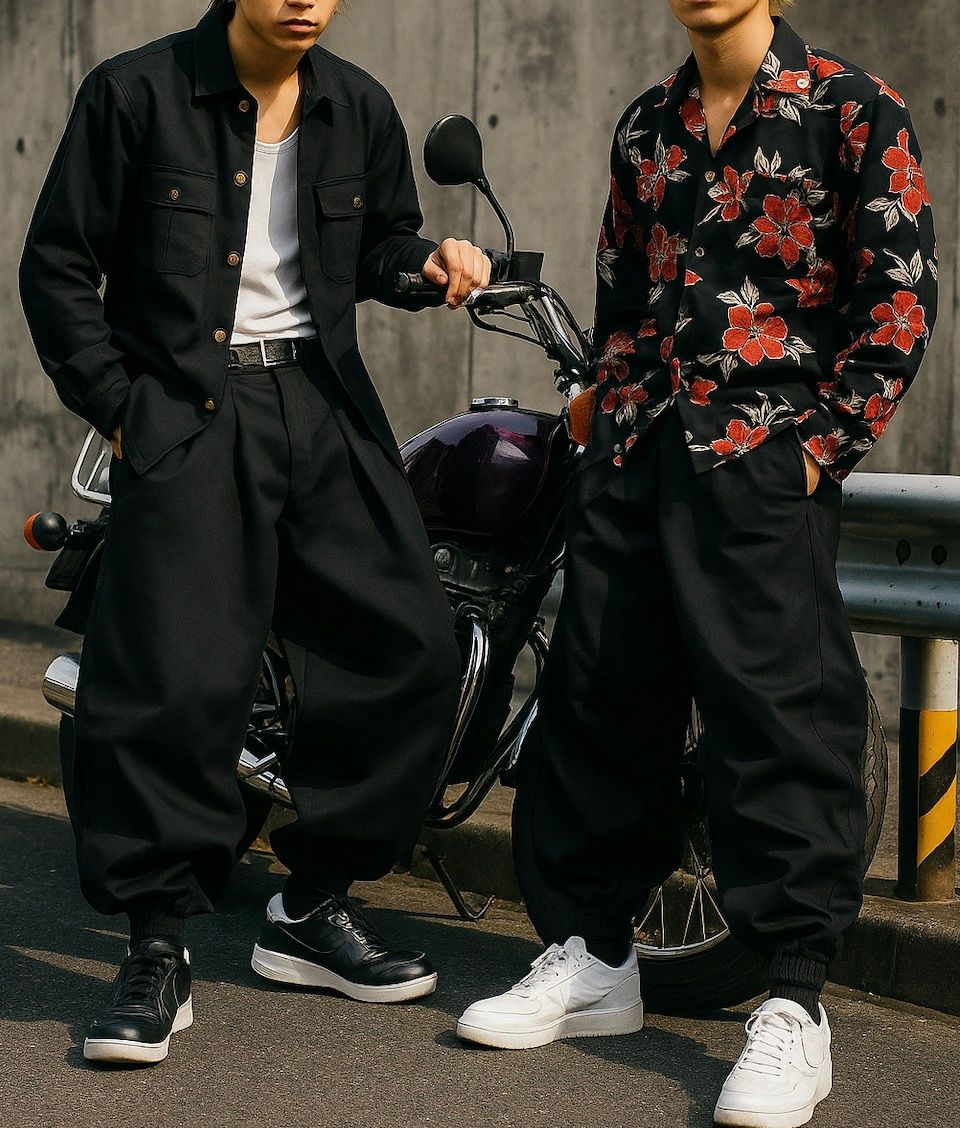
These groups reimagined the garment, pairing it with oversized jackets, dramatic embroidery, and traditional Japanese patterns, transforming a symbol of craftsmanship into an icon of counterculture. In the 2000s, the “wagara” (Japanese pattern) boom reignited interest in Tobi Trousers, blending them seamlessly into casual fashion. This trend reflected a broader movement in Japan where tradition and modernity were joyfully intertwined.
🌐 Impact on Global Streetwear and Techwear
Today, the striking silhouette and functional design of Tobi Trousers are captivating fashion scenes worldwide. In streetwear and techwear communities, their roomy thighs and sharply tapered ankles are praised as “futuristic pants” that harmonize perfectly with the current wide-leg trend.
Across Europe and the U.S., stylists are experimenting with Tobi Trousers in monochrome palettes, or mixing them with parachute pants and cargo pants for fresh, hybrid looks. Their integration into Western wardrobes signals how this once-niche Japanese workwear has been embraced globally.
🏆 The Appeal of “Functional Beauty” in High Fashion
The unique aesthetic of Tobi Trousers has also made its way into high fashion. Heritage brands like Toraichi—known for their craftsmanship and durability—have inspired both Japanese and international designers to incorporate Tobi Trousers’ silhouette and construction into their collections.
By the 2020s, fashion houses such as Rick Owens and A-COLD-WALL* had released pieces influenced by Japanese workwear culture. Their interpretations balance utility and elegance, turning functional design into a runway-worthy statement.
🌟 Worn by Celebrities and Influencers Worldwide
Even global celebrities and influencers have joined the movement. K-pop idols, American rappers, and Instagram style icons have been spotted styling Tobi Trousers in viral posts, many garnering millions of likes.
This cultural crossover marks Tobi Trousers’ evolution from practical workwear to an icon of global fashion culture.
🧷 Why Tobi Trousers Are Trending Now
🛠 The Rise of Utility Wear
In recent years, utility wear—fashion inspired by workwear and outdoor gear—has taken center stage in global style trends. Functional clothing with a rugged edge is no longer confined to job sites; it’s become part of everyday city life. Within this movement, Tobi Trousers (tobi-zubon) have emerged as a standout piece, celebrated for their “authentic functional beauty” forged in the demanding environments of Japanese construction.
Every aspect of their design, from the placement of pockets to the choice of durable fabrics and their distinctive silhouette, reflects practical innovation. This makes them a perfect fit for today’s urban utility style, where function and fashion meet seamlessly.
👖 Perfectly Aligned with the Wide-Leg Trend
The bold, voluminous shape of Tobi Trousers also aligns effortlessly with the wide-leg and oversized silhouettes dominating modern streetwear. Their ballooned thighs and sharply tapered ankles feel both nostalgic and futuristic, setting them apart from ordinary trousers.
For streetwear and techwear fans alike, Tobi Trousers are a “statement piece” that adds edge to any outfit. Pair them with a minimalist top and clean sneakers, and suddenly these traditional work pants transform into a sleek, contemporary fashion item.
🇯🇵 A Celebration of “Japaneseness” and Borderless Fashion
Globally, there’s a growing appreciation for Japanese aesthetics and heritage in fashion. Tobi Trousers, with their roots in Japan’s artisan culture, embody this perfectly. For many designers and style enthusiasts, they represent a “new standard” in blending tradition with modernity.
In the era of borderless fashion—where influences transcend cultures and geographies—Tobi Trousers stand out with a silhouette that feels unique yet universally stylish. Their identity is so distinct that they defy being pinned down to any single nation’s aesthetic, which makes them resonate strongly in Western streetwear scenes.
🌱 Post-COVID Values: Comfort, Versatility, and Storytelling
The pandemic reshaped how we think about clothing. Today’s consumers value:
- Comfort
- Functionality
- Versatility
Tobi Trousers check all three boxes. Their breathable, wide-leg cut allows freedom of movement, while the rugged construction—tested on high-rise scaffolds—gives them durability for everyday wear.
What’s more, wearing Tobi Trousers carries a sense of story. In a world where people crave meaning in what they wear, these trousers act as both a functional garment and a cultural statement. They’re not just pants—they’re a wearable symbol of identity and heritage.
🧷 Styling Tobi Trousers: How to Wear Them with Confidence
Tobi Trousers are a bold fashion statement, thanks to their unique silhouette. But when it comes to incorporating them into your everyday wardrobe, many style enthusiasts wonder: How do you wear them without looking out of place?
Here, we break down three distinct styling approaches—from casual minimalism to street-ready looks, and even a nod to their traditional Japanese roots.
👕 Casual: Minimalist Everyday Style
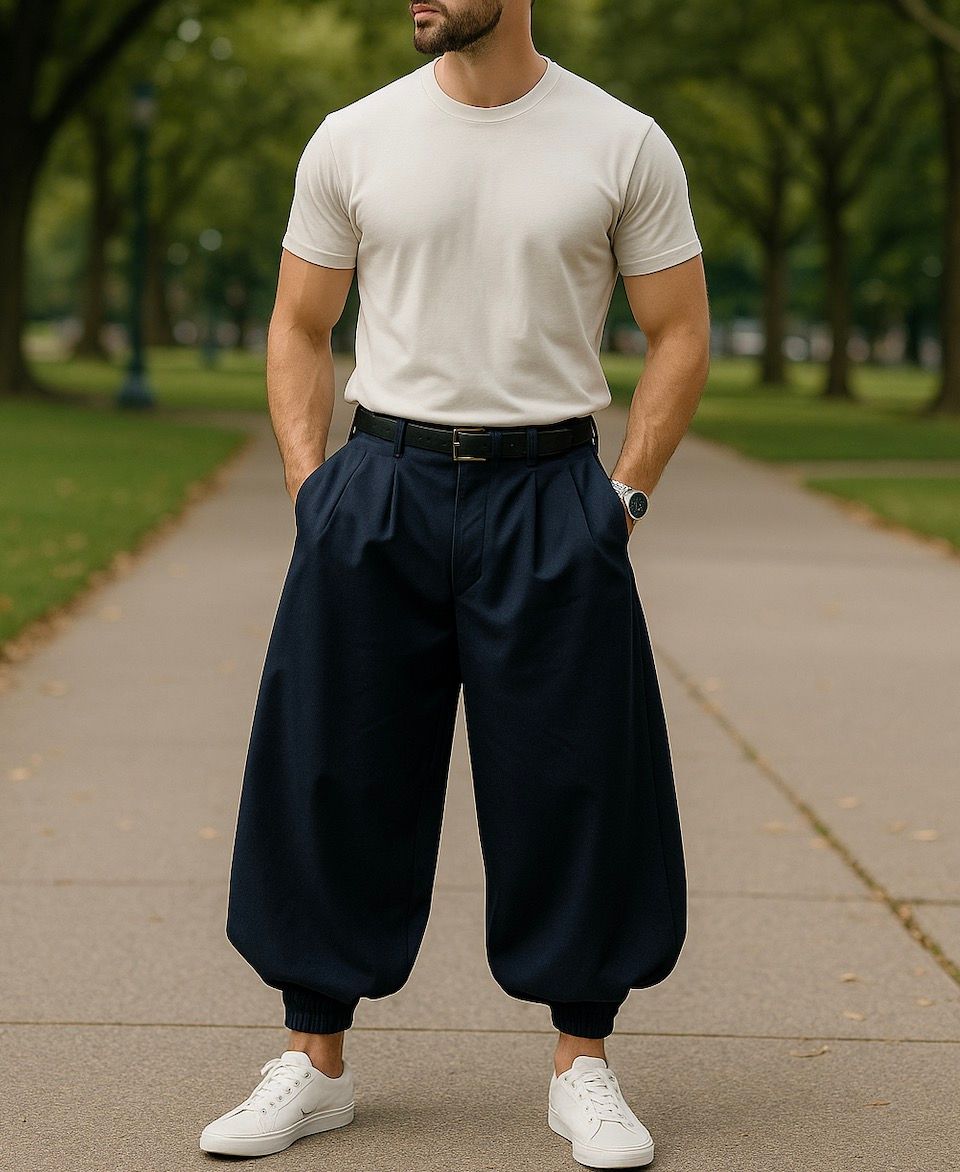
The easiest way to style Tobi Trousers is to keep it clean and simple. Pair them with a plain T-shirt—think white or beige—and tuck it in to highlight the trousers’ sculptural shape. Finish with low-cut sneakers for a lightweight, urban look.
This minimalist approach lets the silhouette of Tobi Trousers take center stage. Keep accessories subtle and streamlined to maintain a refined, contemporary vibe.
🖤 Street Style: Monochrome with an Edge
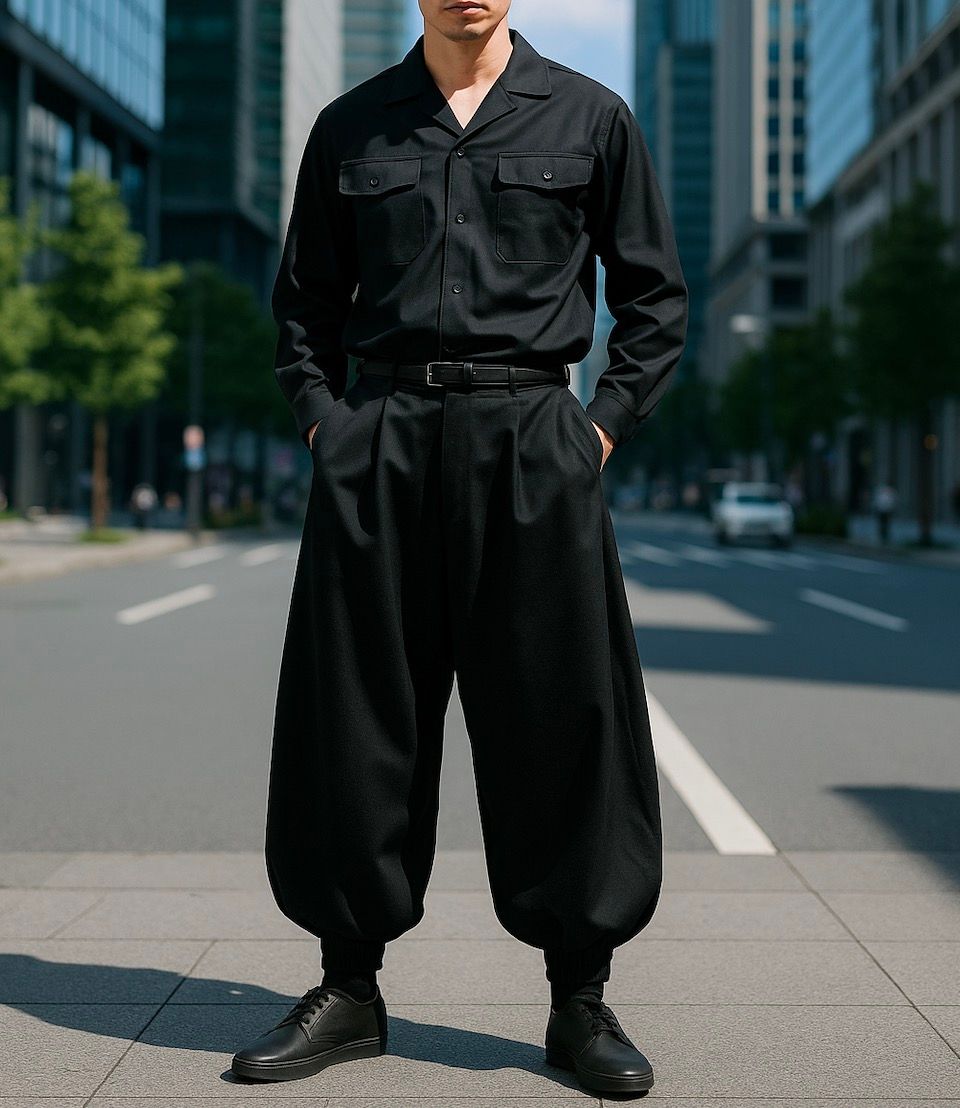
To fully embrace the drama of Tobi Trousers, lean into a monochrome streetwear aesthetic. Opt for oversized tops in black or charcoal gray—hoodies, sweatshirts, or even bomber jackets—to balance out the pants’ volume.
Footwear matters here: high-top sneakers or sturdy boots ground the outfit and give it a solid sense of proportion. For an added touch of urban sophistication, accessorize with a leather crossbody bag, minimalist jewelry, or a sleek cap.
🏯 Tradition Meets Modernity: The Cultural Hybrid
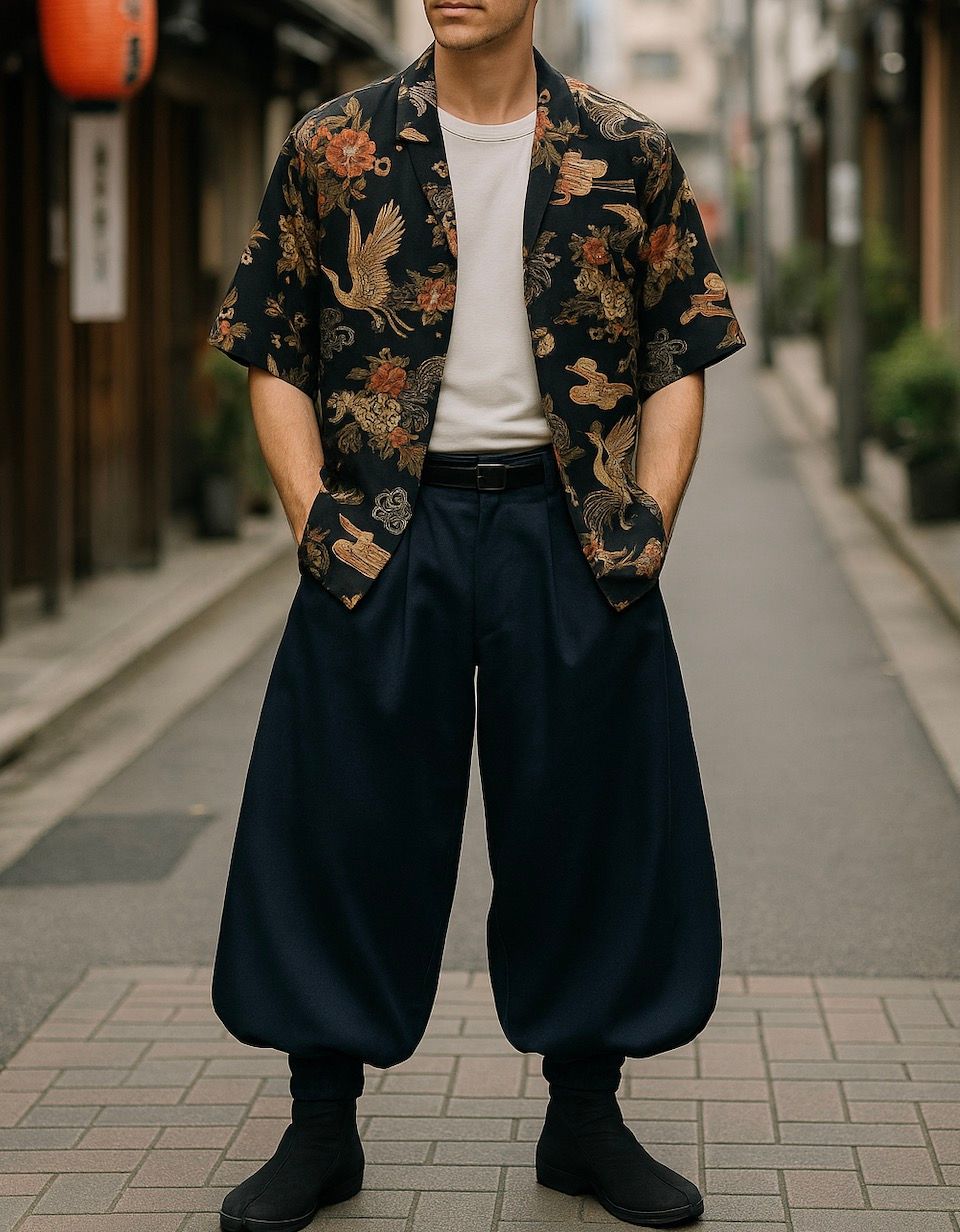
Pay homage to the heritage of Tobi Trousers by blending them with traditional Japanese elements. Try layering a lightweight kimono jacket (haori) or a shirt with classic Japanese patterns over a plain T-shirt. For footwear, split-toe boots or sandals inspired by jikatabi add an authentic yet fashion-forward touch.
This fusion style celebrates the cultural roots of Tobi Trousers while transforming them into a street-ready, statement-making outfit that will turn heads anywhere.
⚖ Pro Styling Tips: Balance Is Key
Because of their voluminous shape, Tobi Trousers require careful styling to achieve visual harmony:
- Avoid tops that are too fitted—this can make the pants look disproportionate.
- Choose footwear with presence. Slim, delicate shoes can throw off the overall balance, making the silhouette appear top-heavy.
Ideally, pair Tobi Trousers with relaxed tops and footwear that has some visual weight, like high-tops or boots. Short socks that reveal the ankle also help create a clean break, enhancing the pants’ tapered leg.
🧷 Where to Buy Tobi Trousers: From Japan to the World
Tobi Trousers (tobi-zubon) are no longer limited to Japanese construction sites—they’ve become a sought-after item in fashion circles worldwide. But where can you get your hands on an authentic pair? Here’s a guide to shopping Tobi Trousers, from heritage brands to international online stores.
🏭 Heritage Brands: For Authentic Craftsmanship
If you’re after true authenticity, Japan’s long-established workwear brands are the place to start. These names have been trusted by generations of craftsmen for their durability, comfort, and distinctive designs.
- Toraichi
Renowned for exceptional durability and functionality, Toraichi is a favorite among professional tobi. Recently, they’ve expanded into fashion-forward lines that bring modern aesthetics to their traditional roots. - Kantou Tobi
Known for its “Edokko spirit” (the pride of Tokyo-born artisans), Kantou Tobi blends traditional style with contemporary touches. Their high-quality fabrics and bold silhouettes have attracted fans overseas as well. - Murakami Hifuku
With over a century of history, Murakami Hifuku focuses on comfort and elegant construction. Their Tobi Trousers combine heritage techniques with a clean, modern finish.
🌐 Online Shopping: Easy Access Worldwide
Living outside Japan? No problem—Tobi Trousers are easily available through online platforms:
- Rakuten Global Market
Offers a vast selection, many shops ship internationally, making it a great option for beginners. - Amazon
Widely available in both Japanese and international marketplaces, with plenty of customer reviews for easy comparison. - Workman
Affordable and minimalist designs, perfect for those trying Tobi Trousers for the first time.
✈ International-Friendly Shops & Remake Brands
In recent years, several overseas brands and online retailers have started offering reimagined versions of Tobi Trousers, often incorporating them into streetwear collections. American and European designers have embraced the silhouette, creating hybrid styles that honor the Japanese original.
Many Japanese retailers also provide international shipping directly from their websites or through Instagram. One tip for global buyers: Japanese sizes tend to run smaller than Western standards, so consider sizing up for the perfect fit.
🌟 Our Top Pick: https://japaneseworkwear.com/
If you’re looking for a reliable and easy way to purchase Tobi Trousers internationally, JapaneseWorkwear.com is an excellent choice.
This site ships worldwide and offers genuine products from brands like Toraichi and Kantou Tobi. Plus, they provide style guides and trend insights, making it perfect for first-time buyers who want to incorporate Tobi Trousers into their wardrobes with confidence.
🧷 How Tobi Trousers Stand Apart from Other Workwear
At first glance, Tobi Trousers (tobi-zubon) might resemble other types of workwear, such as cargo pants or carpenter pants. But a closer look reveals their distinct design and cultural significance. Let’s break it down and see why Tobi Trousers are truly in a league of their own.
👖 Cargo Pants vs. Tobi Trousers
Cargo pants, rooted in military wear, are known for their practicality. With multiple side pockets and durable fabrics, they’ve become a staple in outdoor activities and streetwear alike.
Tobi Trousers, however, stand apart for their sculptural beauty. The balloon-like thighs and sharply tapered ankles were not simply aesthetic choices—they were developed to minimize wind resistance and enhance safety for high-rise workers. This iconic silhouette reflects generations of craftsmanship and Japanese design sensibilities.
While cargo pants are widely used across industries, Tobi Trousers are deeply tied to the culture of tobi—Japanese high-rise construction workers. They aren’t just pants; they’re a cultural icon symbolizing pride, skill, and identity.
🛠 Carpenter Pants vs. Tobi Trousers
Carpenter pants are designed with utility in mind for woodworkers and tradespeople, featuring hammer loops, tool pockets, and reinforced seams to boost productivity.
In contrast, Tobi Trousers make functionality an art form. Their silhouette itself is a tool—engineered for balance and freedom of movement at dangerous heights. The tightly cinched ankles prevent hems from catching in the wind, while pairing them with jikatabi footwear completes a uniform designed for precision and agility.
More than a garment, this setup represents camaraderie and the professional pride of tobi workers—a badge of honor worn with purpose.
🦅 What Makes Tobi Trousers Truly Unique?
Tobi Trousers are unlike any other workwear because they embody a culture and spirit beyond mere functionality.
- Sculptural Aesthetics: Their bold, refined form has even earned them a place in modern fashion as a statement piece.
- Cultural Heritage: Influenced by samurai hakama and refined on postwar construction sites, they’re a living testament to Japan’s design legacy.
- Artisan Pride: Wearing Tobi Trousers signifies more than style—it’s an homage to the resilience and solidarity of workers who shaped Japan’s skylines.
🧷 Tobi Trousers: A Fusion of Tradition and Innovation
Tobi Trousers (tobi-zubon) are far more than just workwear. Born on the high-rise scaffolds of postwar Japan and inspired by traditional garments like the samurai hakama and Edo-period karusan pants, they represent a unique blend of functionality, aesthetics, and artisan pride.
🛠 The Art of Functional Design
The demands of working at extreme heights gave rise to Tobi Trousers’ signature silhouette. The voluminous thighs and cinched ankles were engineered to reduce wind resistance and maximize freedom of movement. The result is a shape that goes beyond utility—it embodies functional beauty in its purest form.
This balance of practicality and sculptural design is exactly why Tobi Trousers have found new life in global fashion, transcending their original purpose.
🌏 Tobi Trousers as “Wearable Culture”
To truly appreciate Tobi Trousers, one must understand the pride woven into them by generations of craftsmen. These pants weren’t just functional—they fostered a sense of unity and identity among the tobi workers who wore them.
As Tobi Trousers enter the realm of modern fashion, it’s important to approach them with respect for their cultural heritage. Knowing the story behind their creation—why they’re shaped this way and who they were designed for—adds depth and meaning to wearing them today.
✨ Connecting the Past and the Future
Tobi Trousers are both a relic of the past and a forward-looking style statement. While preserving their heritage, they’ve evolved with new materials and contemporary interpretations, earning their place in today’s utility-driven fashion landscape.
They are, quite literally, “wearable culture.” A testament to history, craftsmanship, and the human spirit, Tobi Trousers are ready to step into the future—just as their wearers always have.
So, the next time you pull on a pair of Tobi Trousers, take a moment to feel the story and soul stitched into every seam.
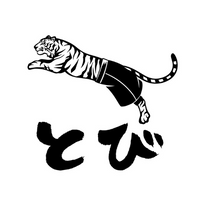
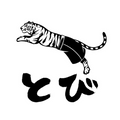

Leave a comment